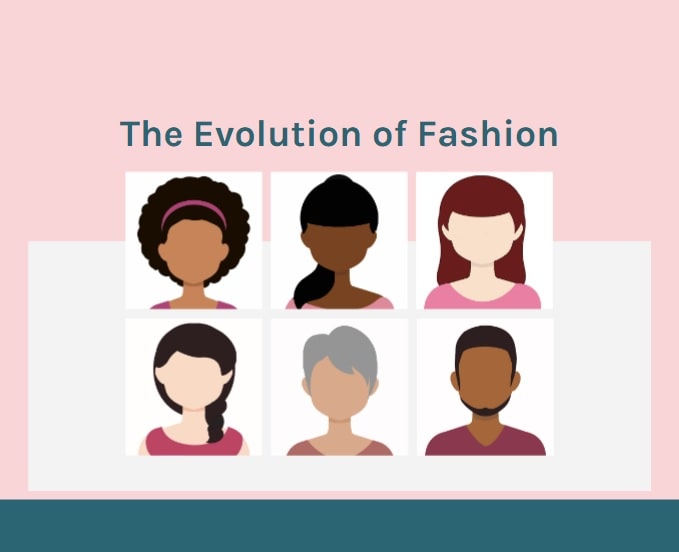Fashion is more than just clothing; it is a dynamic form of self-expression and cultural commentary. From the flowing robes of ancient civilizations to the fast-paced trends of the 21st century, fashion has always been a mirror reflecting societal values, technological advancements, and historical changes. This essay explores the evolution of fashion, examining key periods and pivotal moments that have shaped the way we dress and perceive style today.
Ancient Civilizations: Function Meets Form
In ancient civilizations, clothing was a blend of practicality and social status. The Egyptians, for example, wore linen garments that were both comfortable in the hot climate and indicative of one’s social rank. The Greeks and Romans favored draped garments like the toga and chiton, which allowed for ease of movement and were often made from wool or linen. These early fashion choices were largely dictated by the available materials and the needs of the environment, yet they also began to express individuality and status.
The Middle Ages: Modesty and Hierarchy
The Middle Ages brought a shift towards more modest and layered clothing. With the rise of feudalism and the influence of the Church, garments became symbols of one’s place within the social hierarchy. Nobility wore elaborate, embroidered fabrics, often adorned with jewels, while peasants dressed in simple tunics made from wool or linen. The concept of fashion as a marker of status was firmly established during this period.
The Renaissance: Rebirth of Extravagance
The Renaissance era, spanning the 14th to 17th centuries, saw a resurgence of interest in art, culture, and fashion. Clothing became more elaborate, with intricate designs and luxurious fabrics like silk and velvet. The invention of the printing press allowed for fashion plates to be disseminated, spreading trends across Europe. This period also marked the beginning of fashion as an industry, with tailors and seamstresses gaining prominence.
The 18th Century: Rococo and Revolution
Fashion in the 18th century was characterized by opulence and extravagance, epitomized by the Rococo style. Women wore wide, panniered skirts, tight corsets, and elaborate wigs, while men donned ornate coats and breeches. However, the French Revolution brought a dramatic shift in fashion. Simplicity and practicality became fashionable as a political statement against the excesses of the aristocracy. The sans-culottes, or those without knee breeches, symbolized this new era of egalitarianism.
The 19th Century: Industrialization and Innovation
The 19th century was a time of rapid change, with the Industrial Revolution transforming the fashion industry. Mass production of textiles and the invention of the sewing machine made clothing more affordable and accessible. Fashion magazines emerged, spreading the latest trends to a wider audience. Women’s fashion saw the rise and fall of crinolines and bustles, while men’s fashion became more standardized with the advent of the three-piece suit.
The Early 20th Century: Modernism and Rebellion
The early 20th century was marked by significant upheavals, including World Wars and the Great Depression, which were reflected in fashion. The flapper style of the 1920s, with its dropped waistlines and shorter hemlines, symbolized women’s growing liberation. The 1930s and 1940s saw a return to more conservative styles due to economic constraints and wartime rationing. However, post-war optimism in the 1950s brought about the “New Look” by Christian Dior, characterized by cinched waists and full skirts.
The Late 20th Century: Counterculture and Diversity
The late 20th century was a period of unprecedented diversity in fashion. The 1960s and 1970s saw the rise of counterculture movements, with fashion becoming a powerful form of rebellion. The hippie movement popularized bell-bottoms, tie-dye, and ethnic influences, while punk fashion in the late 1970s featured ripped clothing, leather jackets, and provocative accessories. The 1980s brought bold, exaggerated silhouettes and the rise of designer labels, while the 1990s favored minimalism and grunge.
The 21st Century: Technology and Sustainability
The 21st century has brought about a digital revolution in fashion. Social media platforms like Instagram and TikTok have transformed how trends are disseminated, with influencers and fast fashion brands playing significant roles. Technology has also enabled innovations such as 3D printing and smart textiles. However, this era has also seen a growing awareness of sustainability. The environmental impact of fast fashion has led to a rise in ethical fashion, with consumers and designers alike advocating for sustainable practices, recycling, and slow fashion.
The Globalization of Fashion
Globalization has had a profound impact on fashion, breaking down cultural barriers and allowing for a cross-pollination of styles. Designers now draw inspiration from diverse cultures, resulting in a rich tapestry of global fashion. Traditional garments and techniques from Asia, Africa, and Latin America have gained international recognition, influencing mainstream fashion and promoting cultural appreciation.
The Role of Fashion in Identity and Politics
Fashion has always been a powerful tool for expressing identity and making political statements. Throughout history, clothing has been used to convey gender roles, social status, and political affiliations. In recent years, fashion has become increasingly inclusive, challenging traditional norms around gender and beauty. Movements such as body positivity and gender-neutral fashion have gained momentum, promoting diversity and self-acceptance.
Conclusion: Fashion as a Reflection of Society
The evolution of fashion is a testament to the ever-changing nature of human society. It reflects our values, our technological advancements, and our cultural shifts. From the functional garments of ancient civilizations to the fast-paced, technology-driven fashion of today, clothing has always been more than mere fabric—it is a canvas upon which we paint our identities and our stories. As we move forward, the fashion industry continues to adapt, embracing sustainability and inclusivity, ensuring that fashion remains a relevant and dynamic force in our lives.
